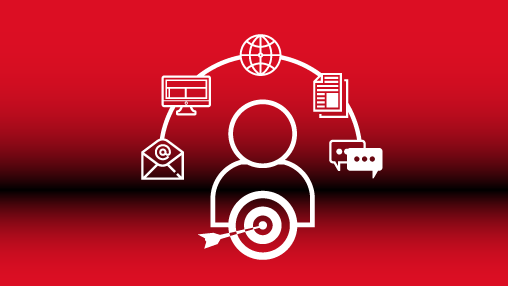This infographic provides a detailed guide for creating a top-tier B2B multi-channel strategy, highlighting key components for a unified cross-channel experience. Based on primary research involving 200 top B2B marketers from the Insights for Professionals (IFP) network, it outlines eight essential elements.

Share this image on your site
Essential elements for every multi-channel strategy: 8 features to include
-
- Holistic alignment across channels: Effective strategies encompass the entire Account-Based Marketing (ABM) roster via diverse channels such as Paid Social, Email, and Programmatic Display. This orchestrates a comprehensive brand awareness initiative, ensuring timely communication at essential junctures
- Centralized data for cohesive reporting: A centralized dashboard that amalgamates crucial metrics is essential for reinforcing alignment and ensuring precise reporting across channels. Such data integration offers a macroscopic view, facilitating the evaluation of channel efficacy and the alignment of goals with ROI
- Strategic sequential messaging based on data: Tailoring communication to reflect the target user’s engagement or purchasing phase enhances message relevance and impact. This strategy bolsters engagement across channels and refines remarketing efforts
- Consistent dialogue and synchronization among channel teams: Regular discussions ensure consistency in messaging and how content is presented across all platforms. Sharing performance insights improves transparency, consistency, and true collaboration among the different channel teams. Importantly, 47% of senior B2B marketers recommend weekly reporting as a key method to maintain this collaboration
- Ongoing evaluation and enhancement: Continual scrutiny and refinement maintain oversight over audience interactions with content. This proactive approach ensures content precision, targeting the appropriate audience via suitable channels with exact messaging
- Integration of channels with automation tools: Channel unification through automation platforms aggregates data, presenting an all-encompassing perspective of prospect behavior. This integration facilitates synchronized messaging across channels, resulting in fluid, multi-channel experiences across the buyer’s journey
- Explicit objective and KPI establishment: Setting SMART objectives and KPIs is paramount. Prioritize metrics such as conversion rates, revenue growth, site traffic, cost per lead, Marketing Qualified Leads (MQLs), and ROI to guide brand-centric decisions
- Targeted brand awareness initiatives: Emphasizing brand awareness across multiple channels guarantees that marketing initiatives effectively reach your intended audience, making a profound and lasting impression
Adhering to these guiding principles enables B2B marketers to formulate a dynamic multi-channel strategy that surpasses industry benchmarks and delivers an integrated, seamless cross-channel user experience.






